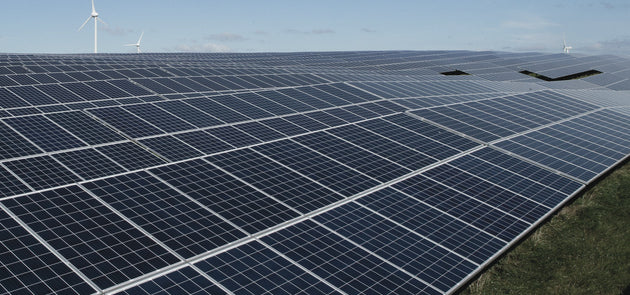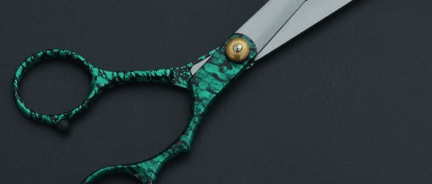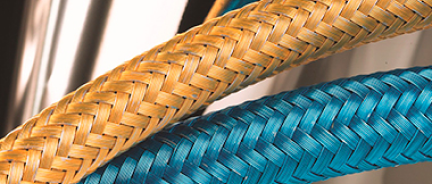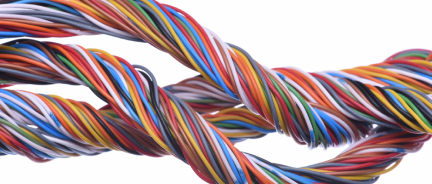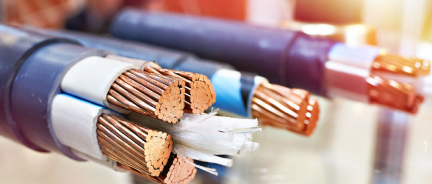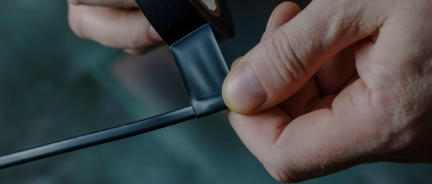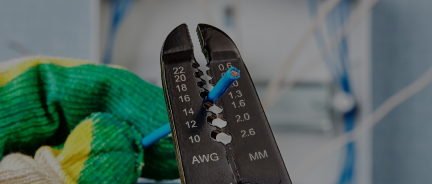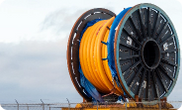NCCER Electrical Level 1 Module 11: Residential Wiring Answers Explained
In this article, we provide answers to the NCCER Electrical Level 1 Module 11 on residential wiring, along with explanations. It covers NEC® requirements for residential systems, load calculations, and branch circuit layout, and installation of electrical components in residential systems.
What is NNCER?
NCCER is a nonprofit organization based in Florida that develops standardized training and certification programs for the construction and maintenance industries in the United States, spanning over 40 specializations. It was created in 1996 by leaders in the construction industry to address the shortage of skilled workers. Electrical specialisation is one of the 40.
For electricians, NCCER (National Centre for Construction Education and Research) provides a structured, nationally recognised training and certification program that builds electrical knowledge and hands-on skills in four progressive levels: Level 1, Level 2, Level 3, and Level 4.
Once students pass tests for each module, NCCER records the credentials in a national registry. After completing all levels and performance tasks, electricians earn an NCCER Certification for that level. Achieving all levels acknowledges that you have been trained to a national standard in addition to your state/ government license.
These credentials are:
-
Portable – recognised by employers nationwide
-
Verifiable – employers can check credentials online
-
Stackable – you build them as you progress through training
An NCCER certification provides a significant edge in the construction and skilled trades industries, primarily by demonstrating a commitment to quality and safety that many employers highly value. While it's not a substitute for a state license, it's a powerful tool for career advancement.
Who Uses NCCER Electrical?
-
Trade schools
-
High schools with CTE programs
-
Apprenticeship programs
-
Contractors and unions
-
Military training programs
Level 1 Module 11 on Residential Wiring
Now, let's move to all the questions and answers on residential wiring:
1. Type MC cable is prohibited:
-
Answer: For direct burial applications
Explanation: MC (Metal Clad) cable has a metal sheath that isn't rated for moisture exposure. Soil contains water and corrosive elements, which can degrade the armour and insulation. Direct burial requires cables with specific protection, like UF. An MC cable has to have a specific direct burial-rated waterproof jacket to be buried, which a regular MC cable does not have.
2. When used for interior wiring systems, Type SE cable is available with:
-
Answer: An insulated grounded conductor
Explanation: Type SE (Service Entrance) cable may contain a separate insulated neutral conductor. This is required in subpanel installations where the ground and neutral must remain isolated to avoid parallel current paths.
3. Type SER cable may be used:
-
Answer: As a subfeed under certain conditions
Explanation: SER cable is commonly used to feed subpanels. It includes two hots, a neutral, and a ground. It must be used in dry, protected spaces and installed according to NEC clearances and conductor fill rules to meet the conditions.
4. Conductors used for electric water heaters must be sized at:
-
Answer: 125% of the heater's nameplate rating
Explanation: Electric water heaters are considered continuous loads (they operate for 3+ hours). NEC 422.13 requires sizing at 125% of full-load current to prevent overheating and ensure long-term conductor durability.
5. A wall switch is required to control stairway lighting at each level when the levels are separated by:
-
Answer: Six or more risers (requires a three-way switch)
Explanation: This is a safety requirement. If a stairway has six or more steps (risers), a light must be operable from both ends to avoid walking in darkness. This typically involves two three-way switches.
6. In a residential pool area, receptacles:
-
Answer: Must be at least 6 feet from the inside walls of the pool
Explanation: Water significantly lowers body resistance, increasing shock risk. NEC 680.22 requires a 6-foot horizontal separation to prevent someone in the pool from reaching an outlet. It also accounts for typical cord lengths and helps ensure that no appliance can accidentally fall into the water.
7. A small residence has a floor area of 900 square feet. What is its general lighting load?
-
Answer: 2,700 VA (multiply by 3)
Explanation: NEC 220.12 sets the lighting load at 3 VA per square foot. For 900 ft²: 900 × 3 = 2,700 VA. This helps size the service and feeder conductors properly.
8. If a dwelling has two kitchen areas, the total small appliance branch circuits required would be:
-
Answer: Four at 1,500 VA each
Explanation: Per NEC 210.11(C)(1), each kitchen needs two 20A small appliance circuits. Each is calculated at 1,500 VA (even though 20A × 120V = 2,400 VA) to provide a safety margin for high-use areas. Two kitchens = 4 cirсuits × 1,500 VA = 6,000 VA total.
9. A lighting load of 2,700 VA at 120 V has an amperage of:
-
Answer: 22.5 A (VA ÷ V)
Explanation: Using the formula I = P ÷ V: 2,700 ÷ 120 = 22.5 A. This helps size breakers and wire.
10. When used as a grounding electrode, a grounding ring must be at least:
-
Answer: 20 feet
Explanation: A grounding electrode conductor like a ring must be at least 20 feet long to ensure low resistance contact with soil and improve ground fault clearing ability.
11. When a screw is used as a main bonding jumper, it must be colored:
-
Answer: Green
Explanation: NEC mandates green as the standard colour for ground-related conductors and hardware.
12. Per NEC 230.24 B), if 120/240 V service conductors pass over residential property or driveways (non-truck), they must be at least:
-
Answer: 12 feet above the ground
Explanation: This clearance prevents accidental contact with ladders, people, or small vehicles. It's a minimum for safety in areas not expected to have trucks.
13. A residence has conductors under a 1" (25 mm) slab. Per NEC 230.6, the are considered:
-
Answer: Inside the house, and a disconnect is required at the meter base
Explanation: NEC considers conductors under <2" of concrete as inside. This is because less than 2" of concrete is not enough of a thermal or physical barrier to protect conductors in the event of a fire. Therefore, the main disconnect must be at or near the meter to comply with service disconnect rules.
14. The correct operation of a four- way switch requires at least:
-
Answer: Two three-way switches
Explanation: A four-way switch only works between two three-way switches. The three-way switches go at each end of the circuit, while the four-way switch can be placed between them to allow control from three or more locations.
15. The cable that contains insulated circuit conductors enclosed in metal armour is:
-
Answer: Metal Clad (Type MC) Cable
Explanation: MC cable has a spiral metal sheath and internal conductors. It’s used in commercial and residential settings where additional mechanical protection is needed.
16. A factory-assembled cable with two or more insulated conductors and a nonmetallic jacket is:
-
Answer: Nonmetallic-sheathed cable (Type NM or NMC)
Explanation: This is the standard for residential indoor wiring. It’s lightweight, easy to install, and protected with a PVC outer sheath. Romex® is the most common brand.
17. ______ are pieces of equipment designed for a particular purpose:
-
Answer: Appliances
Explanation: Appliances convert electricity into a useful function like heating or cooling. They are either hardwired or plug-connected.
18. A ______ is used for turning an electrical circuit on and off:
-
Answer: Switch
Explanation: Switches control current flow. They open (off) or close (on) the path to lights or appliances.
19. The circuit routed to a switch box for controlling lights is the:
-
Answer: Switch leg
Explanation: The switch leg carries power from the switch to the light fixture. It’s only energised when the switch is turned on.
20. A ______ is equipped with a conductor terminal to accept a bonding jumper:
-
Answer: Bonding bushing
Explanation: This ensures continuity in metallic raceways. It provides a secure path for grounding conductors to jump across enclosures.
21. The ______ consists of conductors extending from the last utility pole to the service entrance:
-
Answer: Service drop
Explanation: These are overhead wires delivering power from the utility to the house. The drop ends at the weatherhead or attachment point.
22. The ______ is the point where power is supplied to the building:
-
Answer: Service entrance
Explanation: This includes where the utility conductors enter the building and connect to the meter or main service panel.
23. The ______ lie between the overhead drop or underground lateral and the main disconnect:
-
Answer: Service-entrance equipment
Explanation: This includes the meter socket, main panel, and service disconnect. It's the customer's responsibility and part of the service entrance system.
24. The ______ includes the underground conductors from utility distribution to the building connection:
-
Answer: Service lateral
Explanation: This is the underground equivalent of the service drop and may run under yards or driveways to reach the building.
25. The portion of the wiring system beyond the final overcurrent device is the:
-
Answer: Branch circuit
Explanation: A branch circuit delivers power from the panel to specific loads like outlets, lights, or appliances.
26. A ______ is the conductor between service equipment and the final branch circuit overcurrent device:
-
Answer: Feeder
Explanation: Feeders deliver power from the main panel to subpanels or remote loads. They operate upstream of individual branch circuit protection.
27. A ______ is a type of load distribution point (may refer to a panelboard ):
-
Answer: Load center
Explanation: This is where breakers are installed and circuits originate. It distributes power throughout a home or facility.
28. Raceways, cables, boxes, etc., are installed during:
-
Answer: Roughing in
Explanation: This is the construction phase before the walls are finished. Electricians install wires, device boxes, and conduits.
29. The term ______ is a trade name for Type NM cable, often used generically:
-
Answer: Romex®
Explanation: Romex® is a brand, but electricians often use it to refer to any NM cable used for indoor residential wiring.
30. True or False: In a residential service, grounding can be done to underground gas piping:
-
Answer: False
Explanation: NEC strictly prohibits this. Gas pipes must not carry fault current due to the explosion hazard from arcing or corrosion.
31. A duplex receptacle must be installed in hallways longer than:
-
Answer: 10 feet
Explanation: NEC 210.52(H) ensures that long hallways have convenient access to power without extension cords that are a trip and fire hazard.
32. Electric ranges, clothes dryers, and water heaters that operate at 240V require a ____ circuit breaker:
-
Answer: Double or 2-pole circuit breaker
Explanation: These appliances run on 240 volts, which means they need both hot legs of a 120/240V supply. A 2-pole breaker connects to both phases in the panel and simultaneously disconnects both conductors. This ensures safe shutdown of the entire circuit and complies with NEC requirements for overcurrent protection and disconnecting means on multi-wire branch circuits.
At Nassau National Cable, we sell NM-B (Romex), UF-B, SER, SEU, and MC cable, which are all code-compliant options for indoor branch circuits, underground feeders, subpanel feeds, and armored installations in residential wiring projects.





